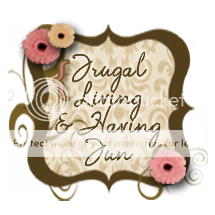
Image by denali2001 via Flickr
Getting started
- Plan your route. There are several bike route mapping websites out there.1 Or you can buy a foldout bike map; you can get one for Boston here. Planning your route is important not only so you don’t get lost but also because you should know the kind of terrain you’ll need to negotiate before you purchase a bike. If you’ll only be on smooth roads, you won’t want a mountain bike (they’re slower than road bikes). Likewise, road bikes aren’t safe off-road. Hybrids (aka "comfort" bikes) are the best of both worlds, and I highly recommend them. Most of my day-to-day rides are on decent roads, but there are some crappy roads and a few gravel paths that I’m glad to have my hybrid for. The Sports Authority website has some good info about the different bike styles.
This is my bike. I heart it. - Related to above.... choose a bike! Craigslist will get you one cheap, but you can’t be sure that it’s in great condition. I bought a shitty mountain bike super cheap off Craigslist when I first started riding because I didn’t want to spend a ton on a bike if I decided riding everywhere wasn’t for me. After a few months, though, I sold that one (again on Craigslist) and got a beautiful, new Dutch hybrid (photo coming soon) that I adore. I got my bike at a great price from BikesDirect.com—but I just checked their site and it doesn’t look like they carry the Gazelle anymore. A good bike is vital to a good riding experience, and as much as I hate to spend money, I think it’s worth it to invest in a good bike. It’s also imperative to get the right size bike for your stature. Most bike shops will do a bike “fitting” for free, even if you don’t end up buying from them. Do not, I repeat do not, buy a bike (or anything else for that matter) from Wal-mart, no matter how cheap it is; the stock they carry, at least as far as adult bikes, is notoriously low-quality.
- Acquire the necessary accessories. There are tons of bike accessories out there; many of them completely frivolous. These are not:
- a good helmet –Full-coverage helmets like this one are fine, but a helmet designed especially for cyclists, like this one, is safest. Nashbar.com has nice ones for $20 or you can just get one at your local bike shop. Proper helmet fitting is more important and more complicated than you might think. Almost any bike shop will help you adjust your helmet for the best fit and comfort, no charge. Yes, cycling caps are cute and stylish, but road rash on your face and a cracked skull are not. Wear a helmet over it while you’re riding.
- a good lock—if you’re riding in a city, you’ll want a U-lock and a cable. The U-lock is for your back tire/frame and you use the cable in conjunction with it to secure your front tire, helmet, seatpost, etc., like this or this. The less space between the U-lock and the bike, the better--it's harder for thieves to get cutters in there. Many will recommend the mini u-locks for this reason, but I've found that a lot of bike racks make it nearly impossible to use those.
If you’re in a small town or someplace you consider super safe, you could try using just a cable lock, but you’re taking a risk. Those are obviously much easier to cut than a 1” thick steel bar. See this article on C.I.C.L.E. for more locking suggestions. - lights—if you’ll be riding at night, you need lights. In addition to reflectors. You need a white headlight, red taillight, and orange reflectors for your spokes and pedals. The color-coding is standard to that people can easily and quickly tell in the dark which direction you’re facing and thereby avoid smooshing you like a pancake. If you’re not going to be riding at night, reflectors will suffice. Most bikes come with sufficient reflectors.
- travel pump—you may not ever need this, but you’ll be really glad you’re carrying it if you do. ‘Nuff said.
- rear carrier, baskets, and panniers—if you’ll be carting groceries, pets, or briefcases around, you’ll want to check into acquiring some sort of carrying system.
- water bottle—You probably already have one that’ll work just fine. Stick it in your backpack, basket, or attach it to your bike with a cheap bottle cage. A word of caution: cages take up valuable lock space and often require drilling a hole in your bike frame. Consider this before buying one. If you still decide to go for it, bring your bottle when you buy it to make sure it fits.
- If you’re game for riding in the rain, a cheap waterproof jacket and a set of fenders will make it much more comfortable. Your tires will kick up a lot of water. No fenders=soaked butt. And don’t be fooled into buying those cheap flat fenders that just attach to your seatpost. They’re useless. If you're hardcore, you might to invest in a pair of rain trousers also.
- I’d also recommend a full-size pump for at home. It takes a lot of time and muscle to fill a new tube with a travel pump.
- Keep in mind, a lot of this stuff can be made or improvised for little or no cost. I’ll be posting some DIY bike accessory tutorials in the coming weeks, so check back.
- a good helmet –Full-coverage helmets like this one are fine, but a helmet designed especially for cyclists, like this one, is safest. Nashbar.com has nice ones for $20 or you can just get one at your local bike shop. Proper helmet fitting is more important and more complicated than you might think. Almost any bike shop will help you adjust your helmet for the best fit and comfort, no charge. Yes, cycling caps are cute and stylish, but road rash on your face and a cracked skull are not. Wear a helmet over it while you’re riding.
- Do a test run on a weekend and time it. This way you’ll know how long it will take you to get to work and you won’t be late. Bring a friend and a picnic and make an outing of it. Don’t forget to check for a safe place near work to lock your bike. Many companies, mine included, provide employee bike racks or garage space. Check with your boss or HR department to see if they offer anything similar. If not, suggest that they think about providing bike parking in the future.
[1] MapMyRide.com, Veloroutes.org, GMap's Pedometer, etc. For a list of city and regional maps, see BikeHacks.com






























0 comments:
Post a Comment